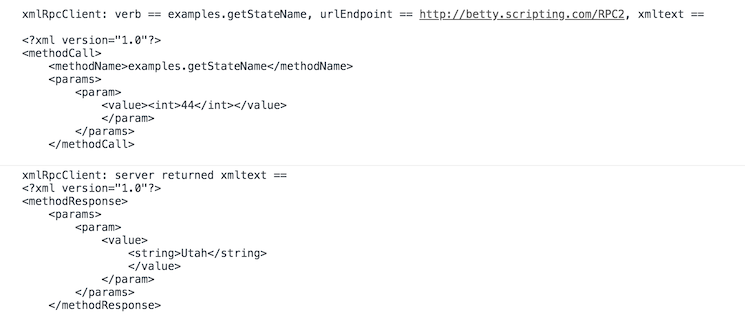

REST-RPC is obviously possible, but would be additional stuff on top of REST, and. For instance, REST tempts you into considering caching in a layer designed for caching human document accesses this may or may not actually have the semantics you are interested in and it can get subtle. REST is better than starting from scratch in most ways but you can still end up down the rabbit hole surprisingly quickly. RPC is a crazy and cruel world, though here there be dragons. My personal feeling is that if XML-RPC meets your needs, you should probably use it, but if it doesn't, don't hesitate to move on. That doesn't mean the work isn't worthwhile.

On the other hand as is so often the case with this increased responsibility you get more power XML-RPC has no decent binary capabilities, for instance, which is easy with REST. "REST + some other stuff I layer on top" can, but you have to bring more to the party for instance, you can decide that everything will be JSON coming back, but you had to decide that, so you had to do the work.

Type "help", "copyright", "credits" or "license" for more information. (Similar to the way you can never really work well with OOP as long as you're thinking in terms of subroutines rather than classes and objects.) It's difficult to be more specific without a concrete example, but right from the top I'd say you're not calling functions in REST, and you need to invert your thinking in order to switch between XML-RPC mode and REST mode. My response is that you probably wouldn't be doing something like that with a REST service. One commenter asks (paraphrasing) "How do I use REST to call a function and pass an array as the third argument, and get back a sensible error if I pass a hash instead?". Which you choose to implement as a service designer depends upon who's responsible for deciding the URI for the new resource if the client decides use PUT, and if the service decides use POST. To create a new resource, you PUT to a specific resource URI, or you POST to the container. (Query parameters for HEAD and GET, content body for POST and PUT.)Īnother typical pattern for REST services is that, for every resource type, there is also a collection resource.
XML RPC CLIENT GOOGLE HOW TO
The standard also specifies how the client should tell the service which representations it knows how to handle, in order to negotiate and find a useful content-type.Ģ) What are the representations for each resourceģ) What additional arguments are supported for each method and representation. The defined responses include the status codes to return, the resource metadata (various HTTP headers), and how to specify the Content-Type header which identifies the representation being returned. The HTTP standard defines the responses to all of these methods, except for the specific representations. POST: create a new resource and return its URI PUT: store a new representation of the resource GET: get a representation of the resource

OPTIONS: which methods does this resource support These methods always have the same purposes: In REST, a type of resource is like a class, a specific resource is like an object, and all objects have some/all of the same basic methods: OPTIONS, HEAD, GET, PUT, POST, DELETE. REST is object oriented programming, which is all about the data and the methods you use to interact with the data. Think of it this way: XML-RPC is structured programming, which is all about the subroutines you call, the data you pass to them, and the data you get back. A lot of questions are of the form "XML-RPC does X, but it isn't clear how to do X in REST", and the answer to most of those questions should be "You wouldn't design the system to do X when taking the REST approach."


 0 kommentar(er)
0 kommentar(er)
